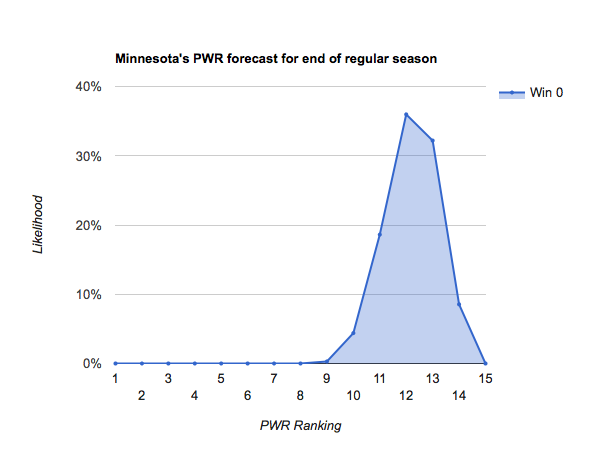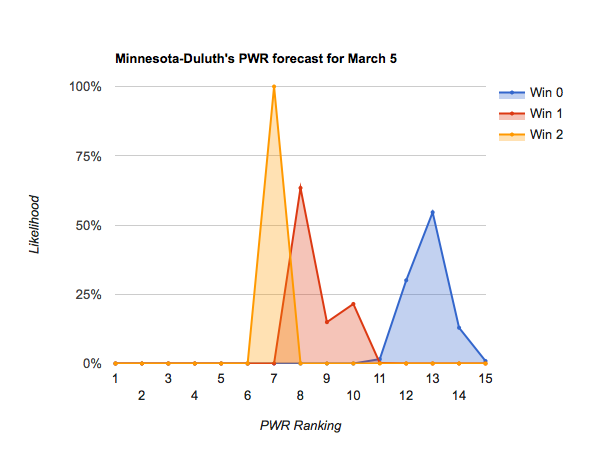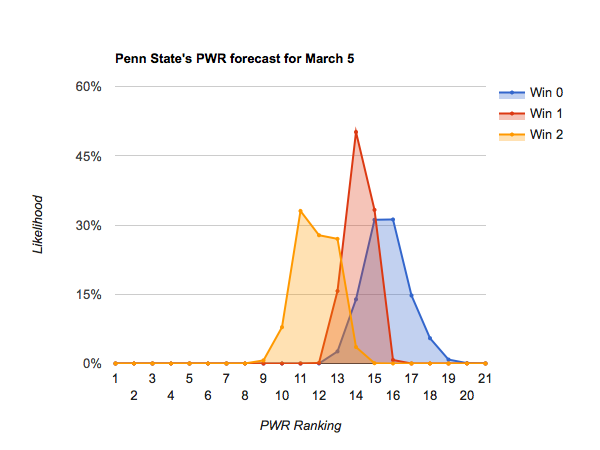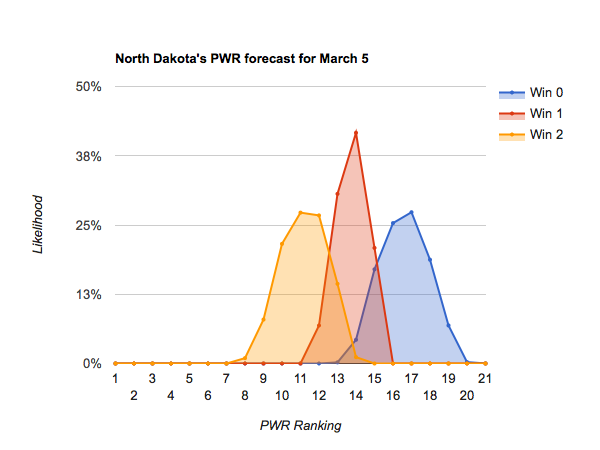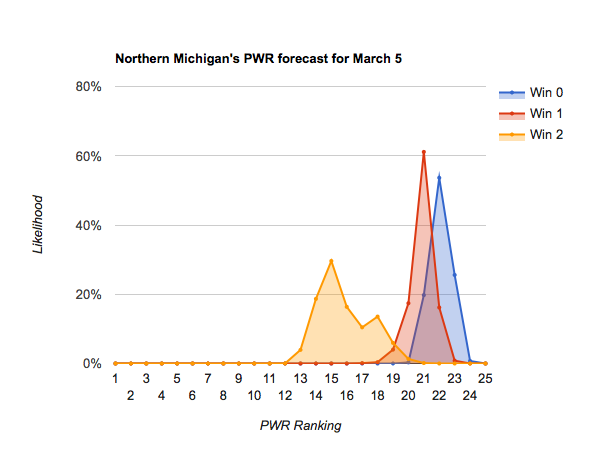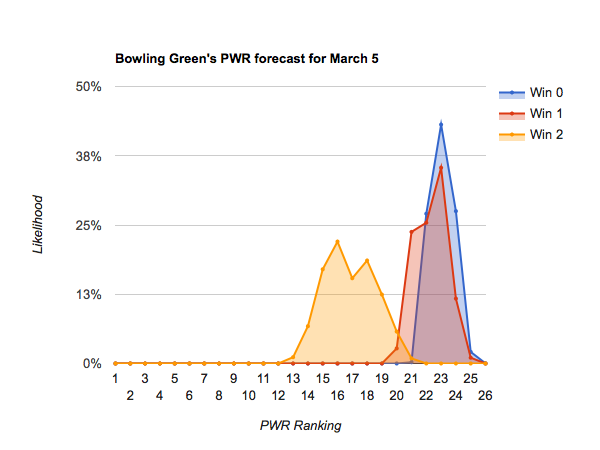Everyone’s favorite college hockey ranking scheme, KRACH, is also a favorite way to predict the odds of each team winning a game. As in past years, I used KRACH to predict each tournament team’s odds of winning it’s first round game, advancing out of the regional, winning a semifinal game, and winning the national championship.
For the first time in modern NCAA tournament history (the modern bracket came into existence when the field was expanded to 16 in 2003), all four 4-seeds are conference tournament champs who otherwise wouldn’t have been selected at-large.
That results in a very balanced bracket, minimizing “regions of death” for the top seeds.
KRACH gives all the 1-seeds a 70-85% chance of winning their opening round game. In fact, it further gives all four an 11-20% chance of taking the national championship. Cumulatively, straight KRACH probabilities result in a 63% chance of the tournament being won by a 1-seed, but only a 3.5% chance of it being won by a 4-seed.
The 2-3 seeds also have similar outlooks with most having a 2-3% chance of winning the national championship. The only exceptions are that slightly stronger performance out of the West this year gives 2-seed Minnesota St a 6% chance of taking the national championship, and 2-seed Denver almost a 10% chance.
| West | Game 1 | Game 2 (Region Champ) | Game 3 (Frozen four semifinal) | Game 4 (National Champ) |
| 1. St Cloud St | 85.46% | 54.96% | 33.36% | 20.06% |
| 4. Air Force | 14.54% | 3.43% | 0.74% | 0.16%) |
| 2. Minnesota St | 56.16% | 24.72% | 12.13% | 5.90% |
| 3. Duluth | 43.84% | 16.89% | 7.27% | 3.11% |
| Midwest | ||||
| 1. Ohio St | 71.15% | 39.11% | 19.77% | 10.62% |
| 4. Princeton | 28.85% | 9.65% | 2.90% | 0.95% |
| 2. Denver | 63.40% | 35.53% | 17.94% | 9.62% |
| 3. Penn St | 36.60% | 15.71% | 5.90% | 2.39% |
| Northeast | ||||
| 1. Cornell | 68.25% | 43.77% | 24.16% | 12.58% |
| 4. Boston U | 31.75% | 14.42% | 5.39% | 1.83% |
| 2. Michigan | 54.07% | 23.56% | 10.19% | 4.06% |
| 3. Northeastern | 45.93% | 18.25% | 7.22% | 2.60% |
| East | ||||
| 1. Notre Dame | 79.99% | 55.83% | 35.06% | 19.82% |
| 4. Michigan Tech | 20.01% | 7.33% | 2.23% | 0.56% |
| 2. Providence | 48.38% | 17.48% | 7.33% | 2.62% |
| 3. Clarkson | 51.62% | 19.37% | 8.42% | 3.13% |

